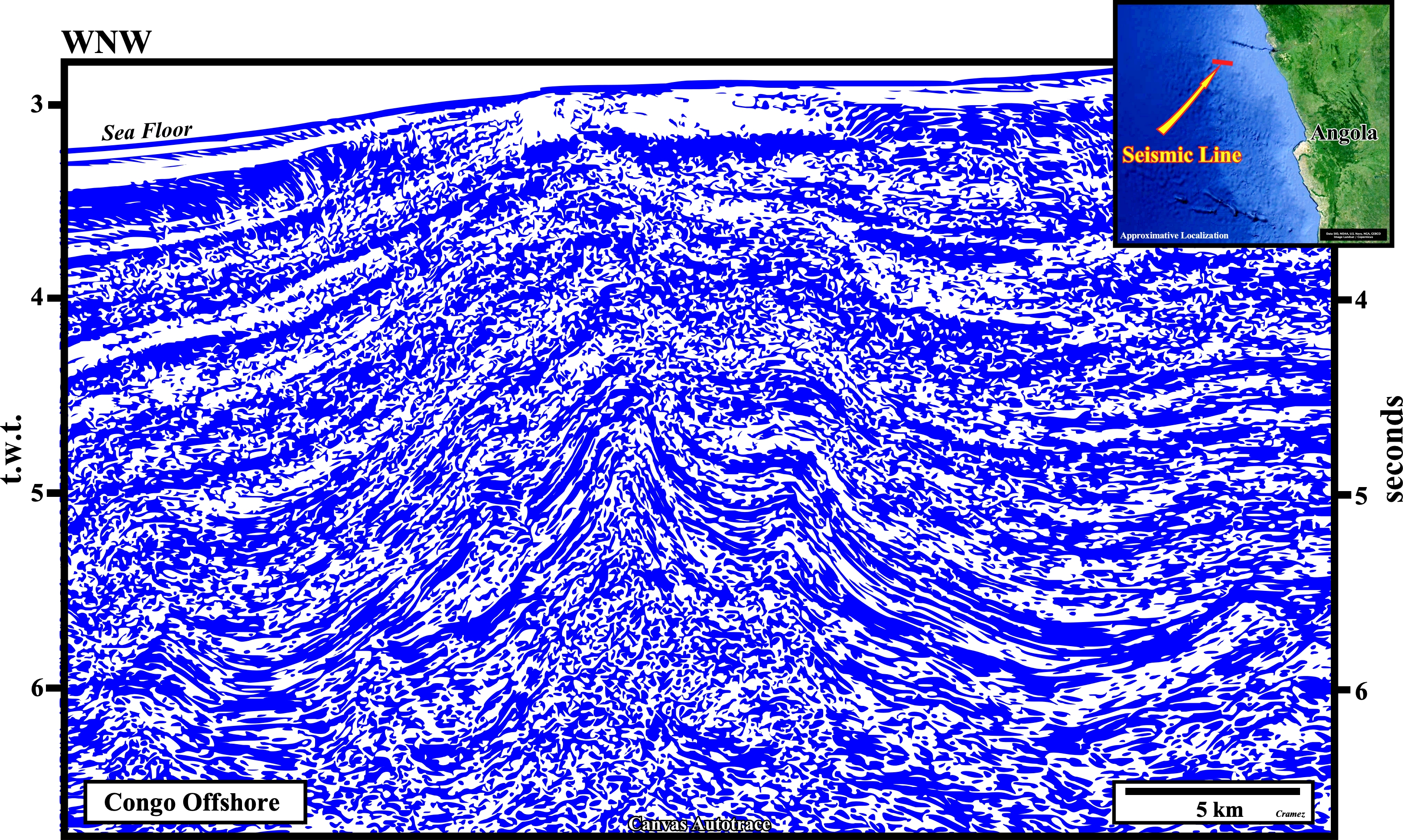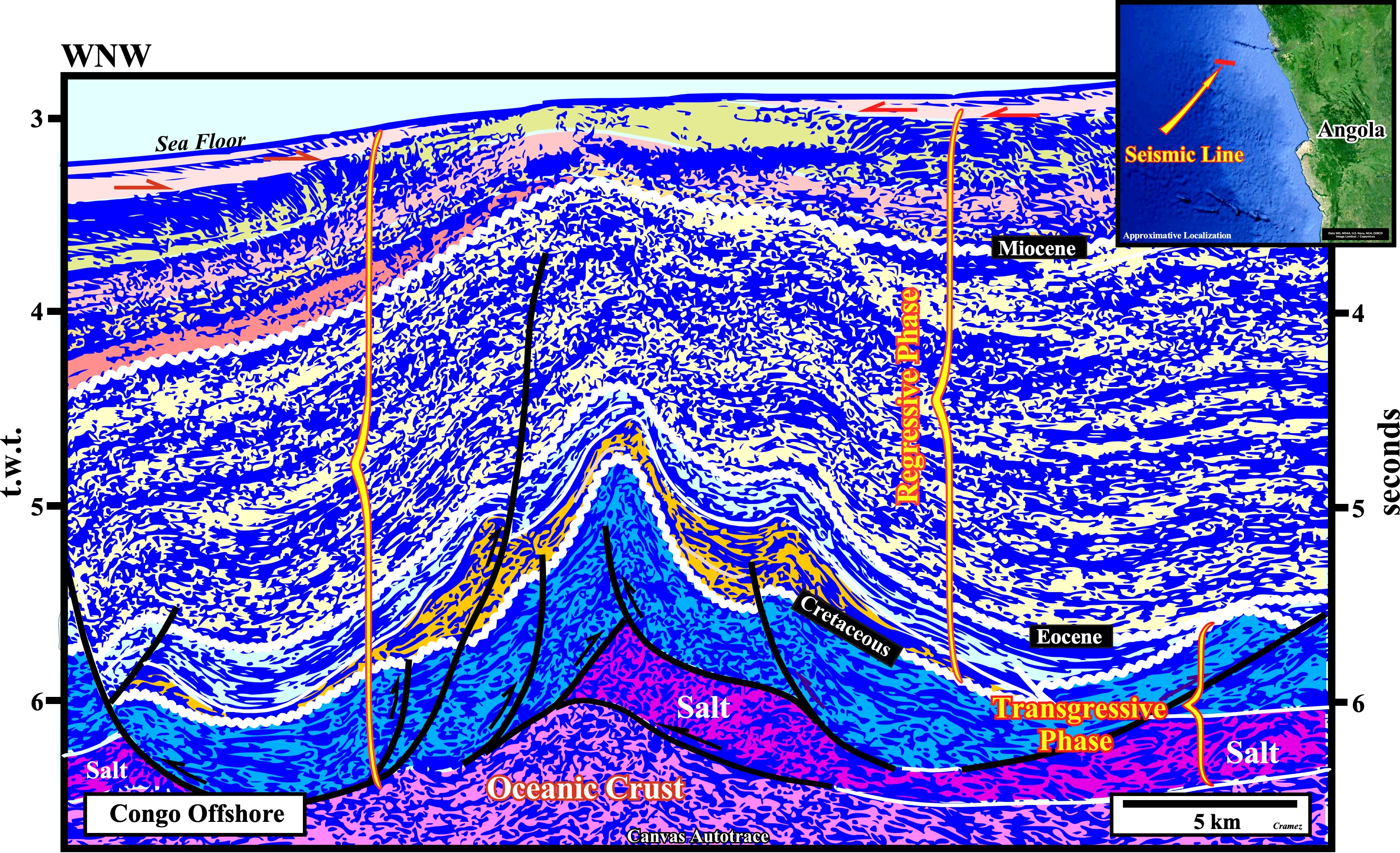

Potential Source-Rocks
Regressive Phase of the Continental Encroachment Cycle


Due the strong terrigeneous influx from the Congo River and the available space (accommodation) induced by the movements of the salt interval, Neogene depocenters of significant thickness developed off the Congo river's mouth. The sedimentation rate being very fast may have allowed the preservation of transported organic matter carried by gravity currents. Under such conditions, given the thickness of the Tertiary sediments, it is possible that a dispersive Neogene generating petroleum sub-system developed, independent of the marine conventional transgressive Cretaceous source-rocks. The presence of oceanic crust, in the bottom of the section, proscribe the occurrence of rift-type basins, which, often, comprise lacustrine source-rocks. In fact, the lengthening of the lithosphere, which creates the rift-type basins, ended with the breakup of the Gondwana small supercontinent, i.e., with the onset of a volcanic crust (sub-aerial or oceanic).
Send E-mails to carlos.cramez@bluewin.ch with comments and suggestions to improve this atlas.
Copyright © 2001 CCramez
Last update:
2022